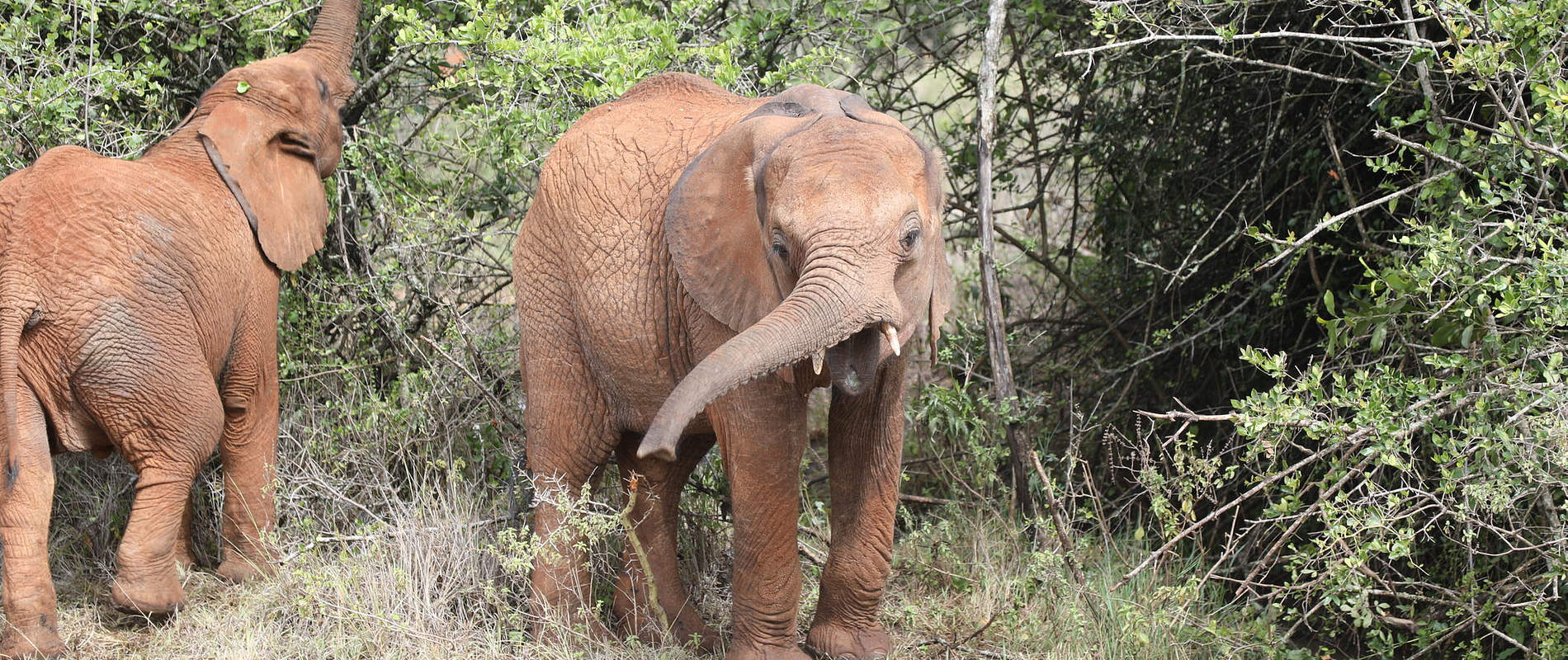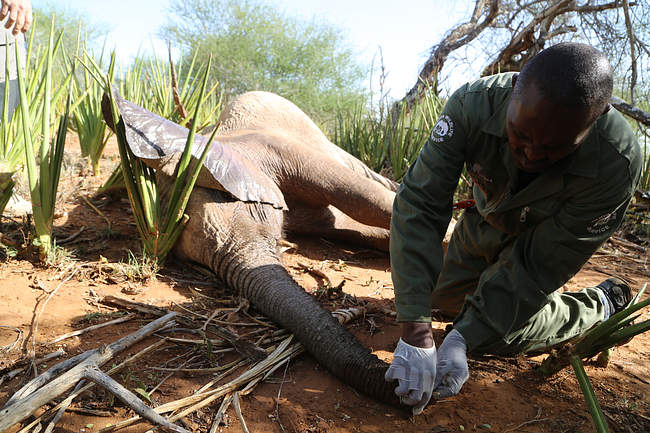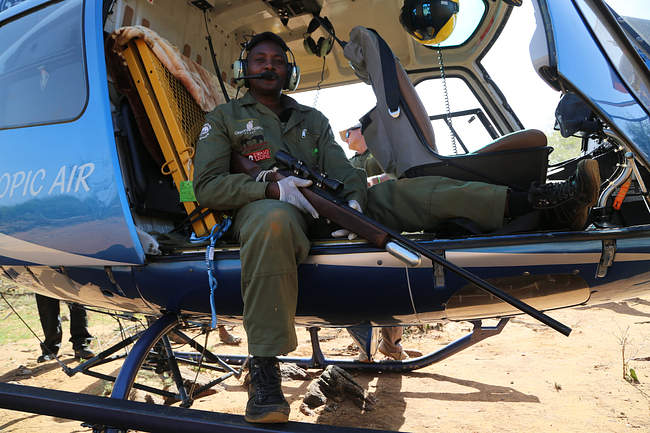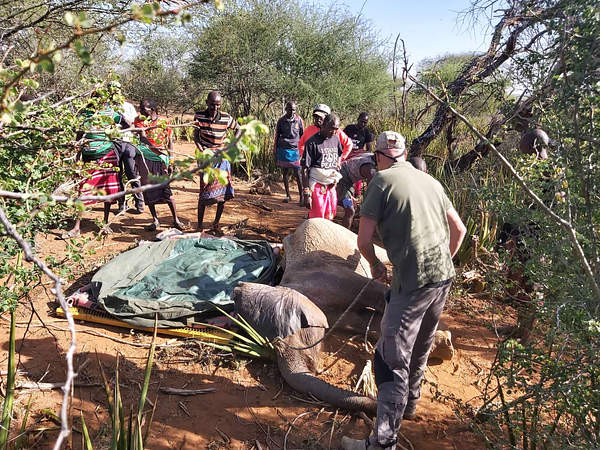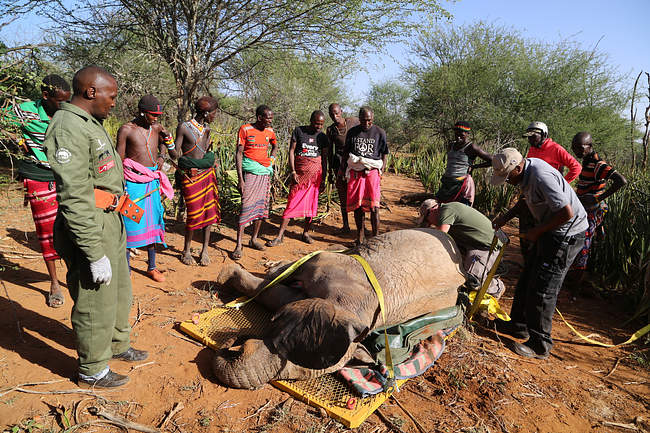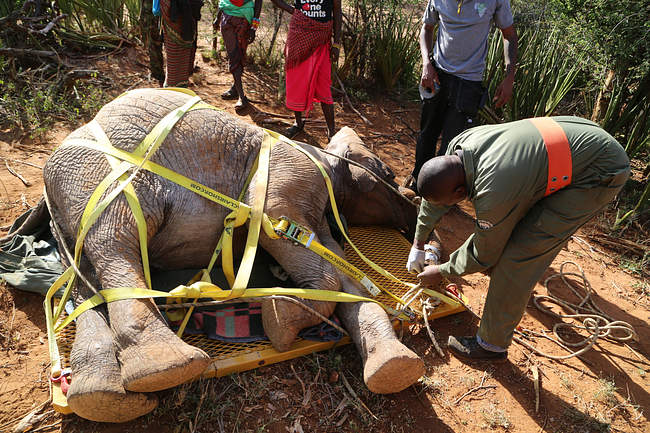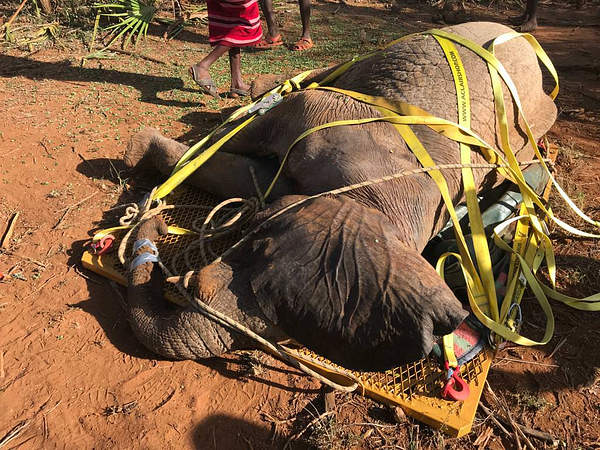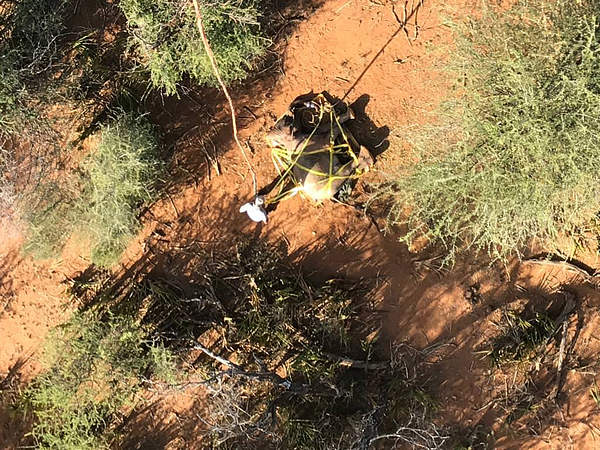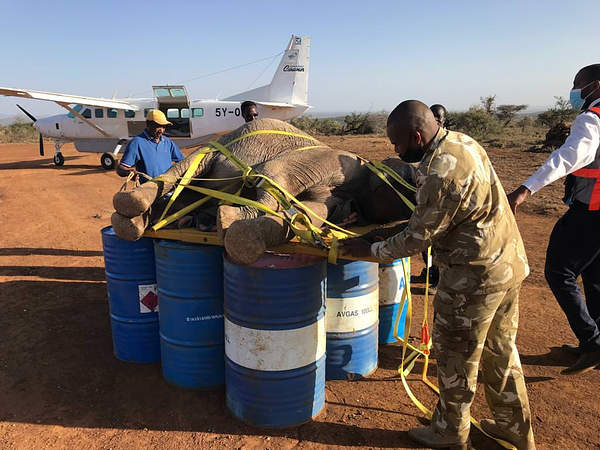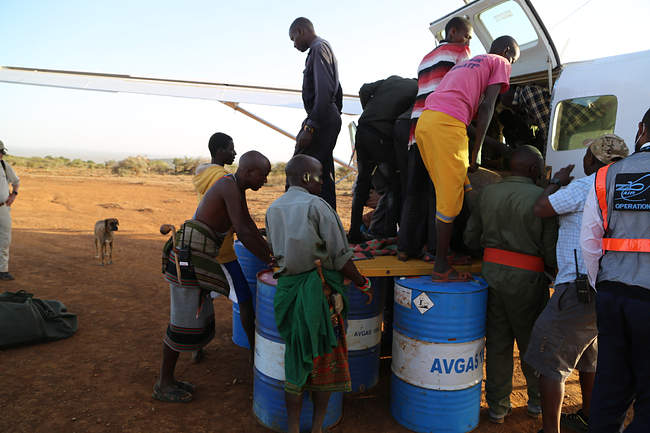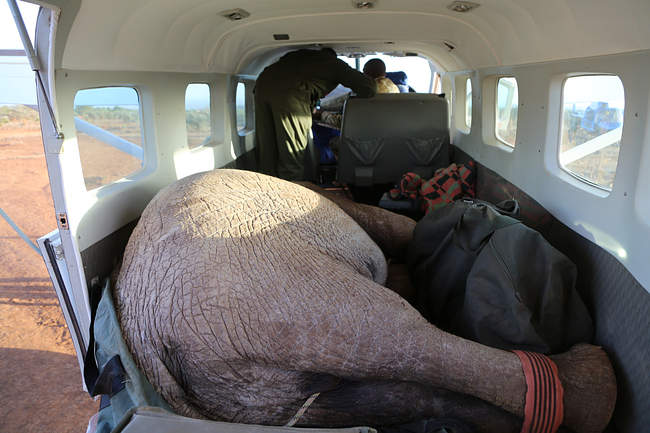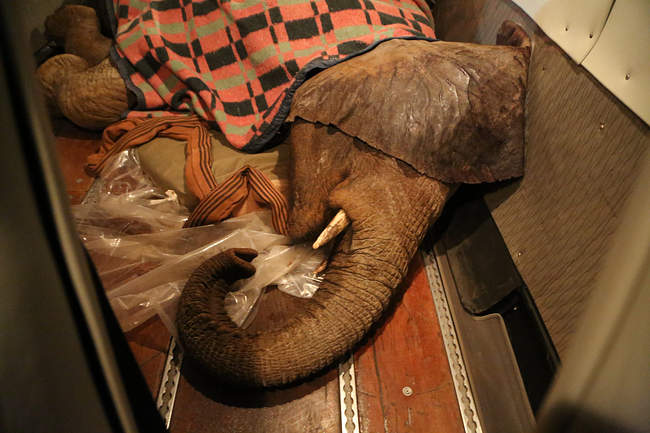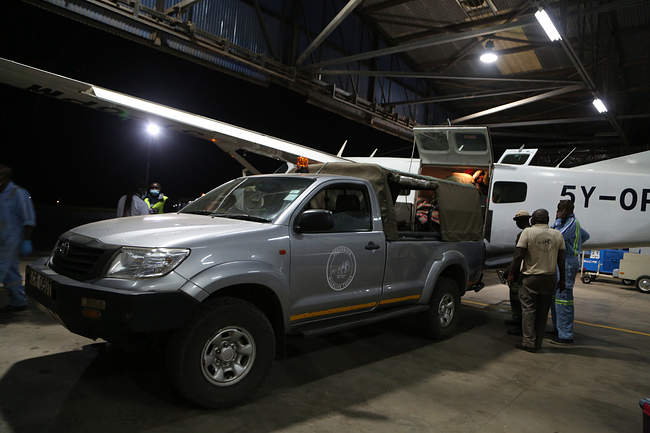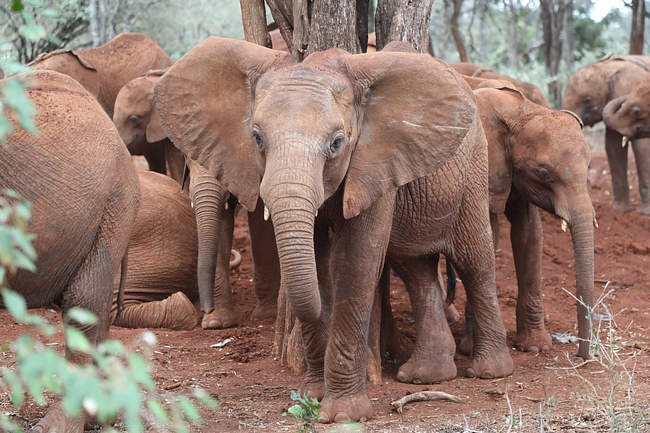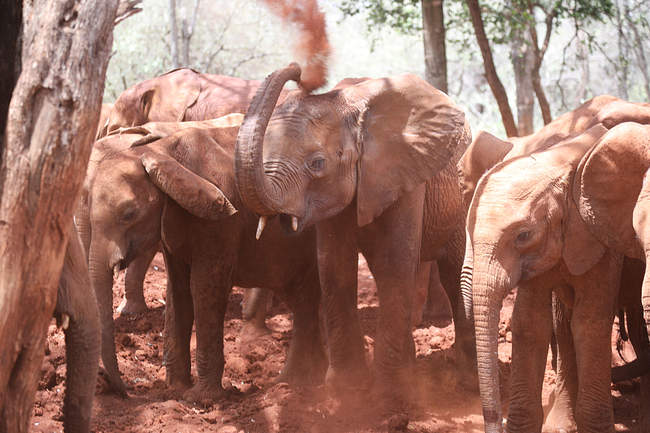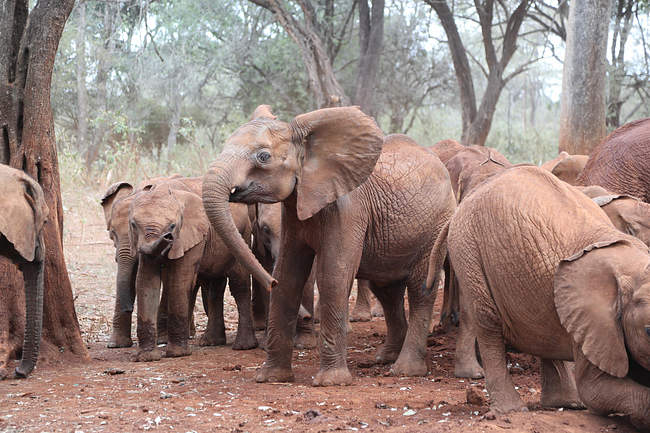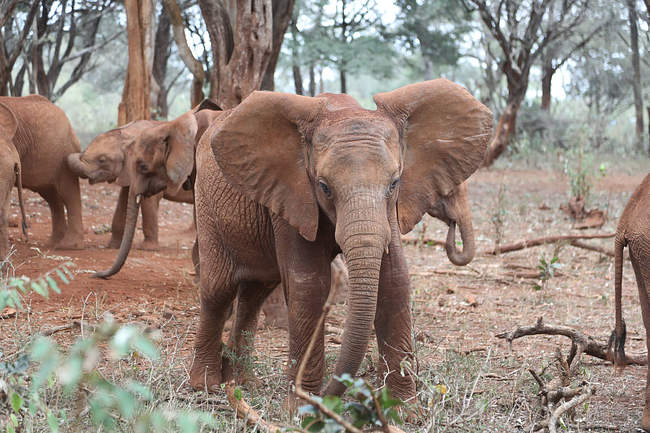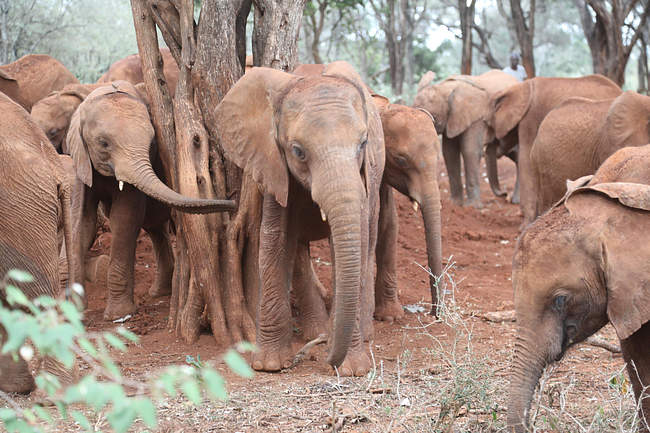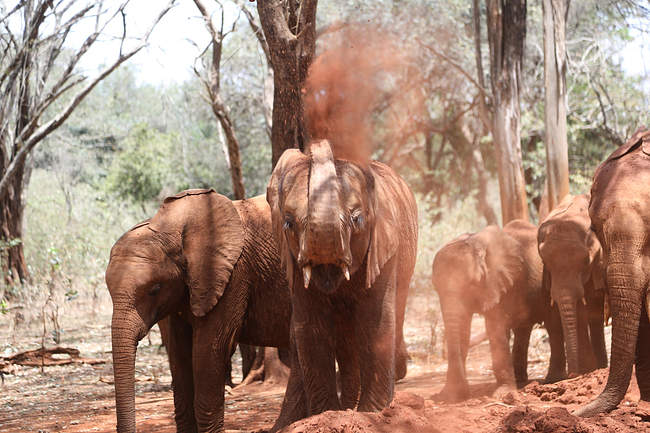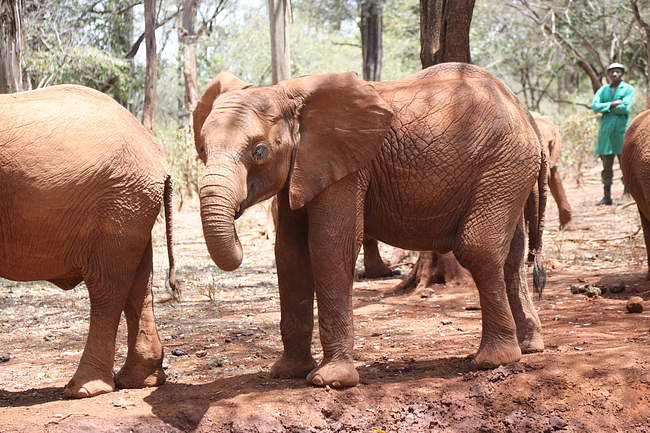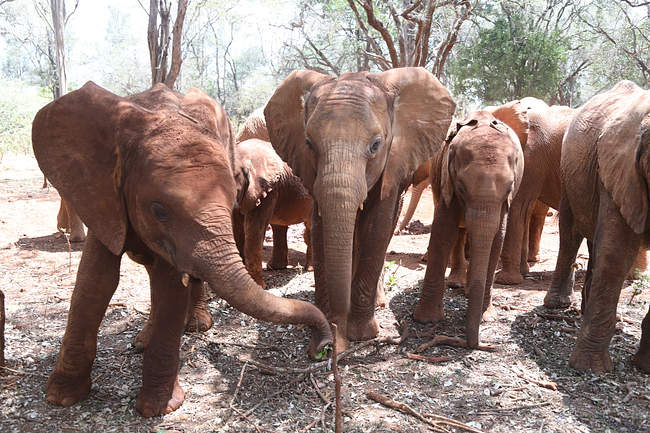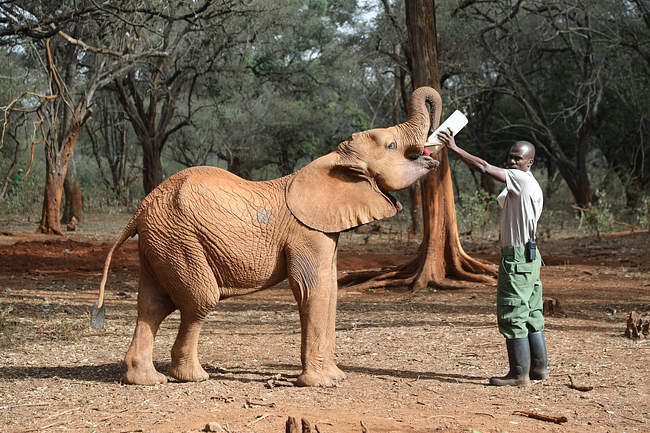In nearly half a century of rescuing orphaned elephants, we haven’t undertaken a groundbreaking, gravity-defying mission of this scale.
It all began on 28th January 2022, when we were contacted by Samburu Trust. A female elephant had been shot and killed, leaving her daughter behind. At three years old, her calf was on the older side, but still dangerously vulnerable given the gruelling, dry conditions. Samburu scouts had been observing her for several days, but her condition was rapidly deteriorating. If she was to survive, KWS vets concluded that a rescue operation was required.
This presented a significant challenge. The calf was located in a remote part of northern Laikipia, inaccessible by road. However, she was far too large to fit in a helicopter. It was time to get creative.
We would need to do the rescue in several phases. Because she was in such an isolated area, we first mobilised our Sky Vet initiative, which is tailored for such missions. A helicopter was sent to the scene with a KWS vet onboard, along with a customised stretcher that can carry large elephants. The helicopter would manage the first phase, flying the calf to Ol Malo airstrip, where a Caravan aeroplane would be waiting to bring her down to Nairobi.
We have airlifted orphans countless times before — but they have always been inside the helicopter. This rescue would be different.
Following coordinates from Samburu scouts, the helicopter touched down near the calf, deposited the stretcher and accessories on the ground, and prepared the anaesthetic gun. Then, it took flight again, so KWS vet Dr Njoroge could dart the calf from the air. After landing the dart, the helicopter shepherded her towards the ground team, who was waiting nearby.
Then came the most remarkable aspect of the rescue operation. We knew from the outset that the calf would never fit inside the helicopter. Instead, we had to sling her underneath. After hauling her onto the stretcher and strapping her in, we were ready for the extraordinary journey to commence. It is not every day that a helicopter slings a sleeping elephant across some of the most wild corners of Kenya. She was completely anaesthetised for the duration of the 30-minute flight, gently swaying above the parched plains.
Upon landing at Ol Malo airstrip, the rescue team realised that the calf was too heavy to lift into the waiting Caravan. Thinking quickly, they gathered half a dozen drums to create an elevated platform. Hovering ever so carefully, the pilot positioned the sleeping elephant atop the platform and then landed the helicopter. The plane drew level with the makeshift platform, and with great effort, she was slid inside. Everyone breathed a collective sigh of relief when they confirmed that she could indeed fit inside the Caravan.

Elephants cannot be under for too long, so Dr Njoroge had to reverse the anaesthetic. He then administered a tranquilliser, to ensure she would remain calm throughout the flight down to Nairobi.
Meanwhile, realising this would be an all-hands-on-deck operation from start to finish, many members of our team were summoned to Wilson Airport. It was dark when the Caravan finally landed in Nairobi. It took a great effort to unload her from the plane, onto the truck, and finally into her stockade at the Nursery.
We named the calf Neshashi, to forever link her to the place of her birth. Neshashi is the name of a river at the bottom of a deep valley. It is known as a very special place for elephants, as they traverse the ancient migratory routes of the north.
Drought victims are tricky to resurrect because of their poor condition and parasites. As we healed Neshashi’s body, we also had to earn her trust. While she was thankfully anaesthetised for the most harrowing part of her rescue, she was very shy upon arrival. Getting her hooked on a bottle was pivotal. She is old enough to not need milk, but it was necessary to help her embrace her Keepers and feel anchored to her new home.
Given Neshashi’s size, we knew that we needed to tread carefully. Such a large elephant could easily dash off into Nairobi National Park, and it would be an enormous undertaking to get her back. However, we needn’t have worried: Neshashi came out of her stockade like a lamb. She never barged her Keepers or pulled a disappearing act; indeed, she has not given us a moment of trouble. While Neshashi easily outsizes most of the Nursery herd, she never throws her weight around. The little ones really gravitate towards her, thriving off her large, gentle presence.

It has been repeated several times in the months since, but Neshashi was the first sling rescue mission we have ever undertaken. She could have had a very different fate, dwindling away on the plains of Laikipia without anyone by her side. Seeing Neshashi today, surrounded by adoring elephants and loving every minute of it, one can immediately understand why we moved mountains to save her.

